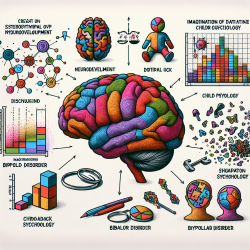Introduction
In the realm of medical assistance in dying (MAiD), the roles of caregivers and patients have evolved beyond mere recipients of care. According to the research article titled ‘My Advocacy is Not About Me, My Advocacy is About Canadians’: A Qualitative Study of how Caregivers and Patients Influence Regulation of Medical Assistance in Dying in Canada, caregivers and patients have emerged as active participants in shaping the regulatory landscape of MAiD in Canada. This blog explores how practitioners can enhance their skills by understanding and implementing the findings of this study.
Understanding the Role of Caregivers and Patients
The study highlights that caregivers and patients are not passive entities in the MAiD system. Instead, they act as 'regulatory actors' who influence law reform and the operation of MAiD in practice. This active participation is crucial for practitioners to recognize, as it underscores the importance of involving these stakeholders in discussions and decisions regarding MAiD.
Key Findings and Implications for Practitioners
The research identifies several ways caregivers and patients engage in regulatory actions:
- Storytelling: Sharing personal experiences through various media to educate and advocate for better MAiD practices.
- Feedback and Complaints: Providing constructive feedback to healthcare providers and institutions to improve MAiD processes.
- Organizational Involvement: Participating in advocacy groups and committees to influence policy changes.
- Resource Development: Creating educational materials and resources to support others navigating the MAiD process.
For practitioners, these findings emphasize the need to actively engage with caregivers and patients. By doing so, practitioners can gain valuable insights into the practical challenges and barriers faced by these stakeholders and work collaboratively to address them.
Encouraging Further Research and Engagement
The study calls for further research into the regulatory roles of caregivers and patients. Practitioners are encouraged to contribute to this body of research by documenting their experiences and observations. This not only enhances their understanding of the MAiD landscape but also empowers them to advocate for more patient-centered and caregiver-inclusive practices.
Conclusion
Caregivers and patients are pivotal in shaping the MAiD regulatory framework. Practitioners who recognize and support their roles as regulatory actors can significantly enhance the quality of care and regulatory practices. By fostering an environment of collaboration and continuous learning, practitioners can ensure that the MAiD system remains responsive to the needs of those it serves.
To read the original research paper, please follow this link: ‘My Advocacy is Not About Me, My Advocacy is About Canadians’: A Qualitative Study of how Caregivers and Patients Influence Regulation of Medical Assistance in Dying in Canada.










